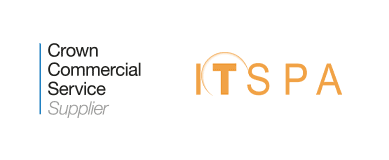With a timeline set for 2025, BT’s recent announcement that it intends to switch off the ISDN network may not seem like urgent news. After all, with ten years to go, there’s plenty of time to organise the system that will replace your existing telephony.
But the secret to a successful SIP implementation is planning – and the more time you have to plan, the better your chances of a system that works quickly and efficiently from day one.
The time to start planning your SIP implementation is now. And thankfully, it’s easier than you might think.
1. Check that your system and handsets support SIP
If your telephone systems and handsets don’t support SIP, they’ll be rendered useless when ISDN is withdrawn.
In this situation, you can opt for a premises-based SIP PBX, or use a hosted SIP-based system. A hosted solution is faster to deploy than an in-house one, and is also a great way to avoid a larger capital expense.
Alternatively, an ISDN-SIP gateway allows you to convert the ISDN interfaces on the PBX to a SIP interface. This can then be connected to any SIP provider over an IP connection. A gateway is a comparatively affordable option, available from as little as £800 – although this comes at the cost of some features.
2. Check that your VoIP supplier has a BT porting agreement
When you switch from ISDN to SIP, you’ll want to retain your existing telephone numbers. If you don’t, you’ll increase the likelihood of service disruption, customer confusion, and wasted money.
As you consider different VoIP service providers, be sure to check for a porting agreement with BT. This sets standards and expectations for how a BT number can be ported to your new service provider.
3. Allow plenty of time and budget contingency
As part of your planning for a migration to SIP, you’ll want to estimate likely costs and timescales.
For reference, the timescales for common migration methods are:
- SIP trunk into a SIP-ready PBX and migrate phone numbers from BT (4 weeks)
- SIP trunk into an ISDN-SIP gateway and migrate phone numbers from BT (6 weeks)
- Implement a new hosted telephone system and migrate phone numbers from BT (4 weeks)
- Replace the PBX, implement SIP trunks to it, and migrate phone numbers from BT (8 weeks)
But these only tell part of the story.
There will be extensive research required before you select a service provider, and the nuances of various networks may affect your implementation. In addition, parts of the migration process depend on external suppliers – where they take longer than expected, your migration will slow down.
With that in mind, be sure to leave excess time and budget for your migration. Better to plan with possible complications in mind than run into unexpected trouble.
4. Trial suppliers before ISDN ends
One of the most effective ways to assess various SIP VoIP providers is to trial services, particularly if they are hosted options. It’s no good trying to do this with limited time in the final few months before the ISDN switch off.
Once you’ve established a shortlist of potential providers, plan time in your schedule to try the services they have to offer in depth.
5. Split your migration into two parts
Transitioning all your telecoms to a new system can be a huge undertaking, fraught with potential complications and issues. When you switch all your systems at once, a single failure could result in all inbound and outbound communications going offline.
To help, you can split your migration into two phases – inbound and outbound. This takes large amounts of risk out of the migration.
6. Run your new and old systems in parallel
Finally, it’s best to consider your migration as an ongoing process, not a moment of ‘switching’ from ISDN to SIP.
Ideally, you’ll run your old and new systems side-by-side for a short period of time. This creates redundancy, so your roll-out can be incremental and controlled at every stage.
Of course, this is only possible if you make the transition well in advance of the ISDN switch off date, where your old systems will become inoperable.














